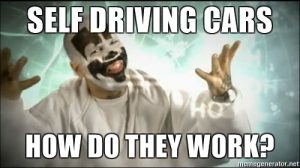I have a strange perspective on Moore’s Law that I can’t seem to shake.
The common expression of Moore’s Law is that transistor density on an integrated circuit grows exponentially. The typical time constant is a doubling every 18 to 24 months. Over the years, Moore’s Law has been remarkably stable. Good folks argue about if and when it will come to and end, or if it already has. People also argue about whether Moore’s Law itself was endogenous to semiconductor scaling; that is, whether the Law became a goal and so became self-fulfilling.
Here’s my take: Rather than observing a constant stream of innovation in semiconductors, what we have witnessed over the last 50 years or so has been the slow, logical expansion of a single innovation: that of the planarized transistor and integrated circuit made from them. The integrated circuit is credited to Jack Kilby who demonstrated the first IC in 1958. However, the basis of real chips is the planar transistor, invented by Jean Hoerni at Fairchild in 1959.
From there, the entirety of the history of Moore’s law is a logical and inevitable consequence. The exponential growth was not due to a stream of genius innovation, but an entirely canny and methodical march of engineering, taking an idea to its logical conclusion: larger wafers, smaller lithography, more metal layers, thinner gate oxides, etc. The logical conclusion being electronic devices that operate on the 100-103 numbers of electrons at a time. It is those limits, along with thermal limits that are the endgame we see today. (There are other complications, like deep-UV lithography that appear very difficult to solve, but can probably be solved at some price.)
I don’t want to belittle the work of so many brilliant engineers who have toiled hard in the salt mines of chip design. Of course, they (we!) have brought the world a fantastic technology. But if you back out just a bit on timescale, I think it’s easy to see that Moore’s Law is not telling you as much about electronics and computers as it is describing a state of the last 50 years.
We have lived in a period of exponential improvement in electronics. That period, like all periods of exponential change, will end; perhaps already has. At any but the smallest timescales, major technology innovations look like step functions followed by a longer and partially overlapping period of diffusion into society. Aeronautics, combustion engines, solar cells, wind turbines, you name it.
None of this makes me sad, though I wished airplanes were still getting faster and better. In the multi-generational mad-dash to take semiconductors to their limits, we’ve probably passed over lots of side opportunities to use chips in novel ways, ways that require more design attention per transistor than total transistors. I hope that we will see more novel electronic devices in the future, as brains that were focused on more and faster start to look for other ways to do interesting things in electronics.









